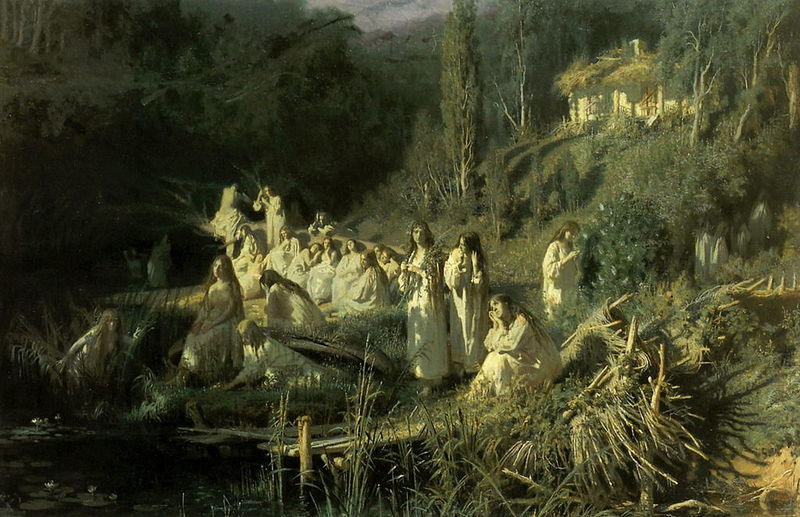The northern forest's of Scandinavia are cold and dark, they are also home to many mysterious creatures Gnomes, Trolls, Giants, elves ect.
But there's another creatures that haunts these wood, as deadly as she is beautiful...
The skogsrå.
The skogsrå is a swedish version of the huldra.
,............
She most often appears as a beautiful young woman with a friendly attitude.
From the front she looks like a normal woman but from behind she usually has ether a fox or cow tail sicking out of her skirt/dress and a hollow back (but not always).
More often than not, the men that follow her into the forest are never seen again.
In some folktales any man that had sex with her and returned would be like a hollow shell of his former self as his soul remained with her.
However if the man is a hunter or someone that was kind to her, he may be rewarded with good luck in the hunt or fishing trip but should he ever be unfaithful to her, he will be struck with extreme bad luck and accidents. In some cases the bad luck may end if the hunter fires a shot into the woods.
Nyland, Finland Folklore says firing silver bullets can kill a skogsrå
In Norway, the word huldrefolk or huldre (plural) comes from Old Norse huldr meaning ‘hidden’ it's used for all kinds of supernatural creatures. Hulder, or Huldra in the singular, signifies a female forest spirit, though she may also appear in mountains.
These forest spirits act alone, instead of in.large group's or families like other supernatural beings, like the vittra. In northern Sweden, the name vittra refers to a group of supernatural beings that lives underground that have many traits in common with fairies from folklore of the British Isles, as well as with the ellefolk in Danish tradition or the huldrefolk /Hilda folk in Norwegian tradition.
Finland also has a version of the Huldra/ skogsrå, Some names in the Finnish language, mainly from the west coast, also show a link to the Swedish traditions, metsänpiika ‘forest girl’ or metsänneito ‘forest maid’ are the most often used names for the female forest spirit. However, there are also other localised names such as haapaneitsyt ‘aspen-maid’ or sinipiika ‘blue maid’.
Her other Swedish names are skogsrå, skogsrådan, skogsråa ‘forest ruler’, råan, rådande ‘the ruler,/the ruling spirit’, skogsjungfru ‘forest maiden’, skogsfru, skogssnuva ‘forest woman’, skogskäringen ‘the forest hag’, or with a nickname such as Grankotte–Maja ‘Spruce cone-Maja’, Talle-Maja ‘Pine tree-Maja’. She is also known by many different local variants like.. Gonna, Besta, Rånda, Skogela, Lanna-frökna ‘The lady of Lanna’ or Ysäters-Kajsa ‘Kajsa of Ysäter’. On the island of Gotland, there are records of a female troll called Torspjäska that plays the same role and has the same function as forest spirit on the mainland. Germany has a legend of a long-haired beautiful fores spirits too,. Called Holzfräulein ‘the tree lady’, who was dressed in leaves, or as Moosweiblein ‘the moss woman’.
If you're heading into the woods soon, be weary of any beautiful strangers that may approach you ......
🖤💕Also Happy Valentines Day.💕🖤


.jpeg)








